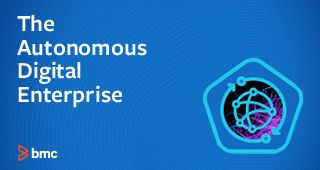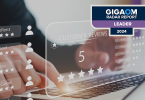Technology can strengthen the doctor/patient relationship and provide information to patients that informs healthcare decision making. Some of the trends that are shaping that experience are visible now. Patients—especially Millennials—are interested in controlling their experience and investing in their digital health journey via omni-channel tools: chat, text, e-mail, apps, voice, telehealth, and web. They’re the first-wave consumers of a Transcendent Customer Experience that brings customers what they want, when and where they want it.
What’s important for digital brand owners to consider is whether their current omni-channel tools are working as intended for customers: Are patients achieving their goals online? Where do they encounter obstacles? How does that experience reflect on the brand, customer satisfaction, and health outcomes? According to a report by Acquia, 80 percent of customers think technology should make their experiences with brands more valuable.
Dr Michelle Jimerson (MD, MPH), of Yampa Valley Medical Associates in Steamboat Springs, Colorado, tells us, “The journey to accessing care often begins with patients researching symptoms online, followed by seeking nearby healthcare providers, reading reviews and making appointments. The care process continues in a patient portal with access to test results, prescriptions, health records and more.”
The most common use of technology for healthcare today is searching symptoms on the internet. Along with its popularity comes a host of issues about privacy, advertising, and the reliability of speculative, socially-shared information. Despite those risks, free and instant access to health information holds huge appeal to consumers. Other examples of consumer health tools include:
- Walgreens digital marketplace Find Care offers customers a variety of healthcare services online: lab tests, weight loss support, sleep solutions, COVID-19 testing, and virtual consults.
- Apps that promise symptom triaging supported by artificial intelligence (AI) and connect patients with potential service providers via texting are available now from insurers like Anthem.
Recent events have driven rapid, evolutionary change from healthcare IT:
- Geisinger Health in Pennsylvania saw COVID-19 drive a 500 percent increase in telehealth visits, and a sudden, unplanned increase of 13, 000 employees working remotely.
- 2,000 DNA sequences at the Icahn School of Medicine at Mount Sinai totaled 100 terabytes of data.
According to Dr. Jimerson five trends are beginning to shape the digital patient journey:
- Visibility and sharing of electronic health records. The HIPAA-mandated shift to electronic health records has empowered caregivers to share patient history, records, test results, imagery, and notes digitally—if they are on the same platform (i.e., Epic, Cerner, GE, CoreCloud, AthenaHealth, eClinicalWorks, Nextgen, Allscripts). Similarly, patients can now track their own health history with detailed records through self-service patient portals. That visibility expands treatment options by consolidating patient history for easy access, review, and sharing.
- E-mail and text reminders. Messaging helps patients remember to take medications as prescribed, order refills, and keep appointments.
- Telehealth has risen with the global pandemic, and it offers promise for rural areas where doctors may be a long drive away. However, the technology only goes so far. Successful telehealth consults hinge on communication between the provider and patient. A pre-existing relationship helps, too, giving the provider insight into the patient’s medical history, support system, financial situation,, and willingness to follow professional advice.
- “Dr Google.” As discussed above, doctors are seeing more patients who do their own research online, either before a consult, or once they have their bloodwork and test results in hand. Patients want to be involved in the decision-making process and talk to people before investing in a course of action.
- Electronic content. In addition to the information that’s already publicly available online, thousands of medical journal and scientific research articles are published every day; more technical information than any human being can absorb. Professional and specialty content can be aggregated and even added to workflows as providers organize exam notes, lab results, patient history, and prescribe courses of treatment. At the point of care, practitioners can now access crucial information in a clinical setting and leverage decision support content like Wolters Kluwer UpToDate through an app or smart phone.
Healing will always benefit from a strong patient/doctor relationship. Technology can enhance and strengthen that relationship by adding knowledge, accurate diagnostic information, and successful treatment suggestions. The future state of business included in the Autonomous Digital Business envisions an interconnectedness as companies learn to be agile, adopt change enabled by intelligent technology, and use data to deliver better customer experiences. That’s certainly true for healthcare, and we can see the future patient experience taking shape in a number of ways:
- In remote geographies far from healthcare facilities, patients can check medications, research symptoms, and engage in telehealth consults through a mobile app on their smart phones.
- Chatbots will expand to automate up-front patient filtering, beginning with low-level screening information and initial questions followed by real-time input of data from wearables, saving practitioners time and effort, and increasing productivity. They can also steer patients to authoritative healthcare knowledge articles as appropriate.
- AI will help practitioners access content at the point of care; not as a robot standing beside them in a physical exam, but as a popup in a medical record workflow—like a spell check—suggesting additional diagnosis and treatment options.
- As telehealth grows, new self-service interactive capabilities will gather data that supports remote exams, and the traditional in-person exam will achieve data-driven efficiency.
As part of a future Transcendent Customer Experience where patients get what they want, when and where they want it, self-help and “self-health” will come together. Armed with ubiquitous digital access to decision-quality data, visualizations, trends, real-time feedback, records, and reminders, it will be easier for patients to stay healthy, make better decisions, work with their doctors, and adopt lifesaving habits.
Thank you to Dr. Michelle Jimerson (MD, MPH), of Yampa Valley Medical Associates in Steamboat Springs Colorado, and Physician’s Assistant Millie Flanigan of Steamboat Springs Family Medicine who shared insights on how technology is impacting the practice of modern family medicine in rural Northwest Colorado.
The Autonomous Digital Enterprise
These postings are my own and do not necessarily represent BMC's position, strategies, or opinion.
See an error or have a suggestion? Please let us know by emailing [email protected].







